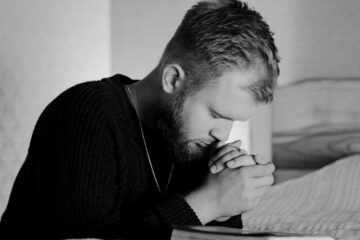Protopresbyter Mihaïl Efthymiou
Before we embark on the presentation of our subject, we need to discuss the time of the construction of the church of the Holy Wisdom [of God].
The church of the Holy Wisdom was built in honor of Christ. The construction started after the 1st Ecumenical Synod in Nicaea, in 325, at which Christ was acknowledged as the ‘Word and Wisdom’ of God.
According to tradition, which is preserved by the Byzantine chroniclers, the first church of the Holy Wisdom was built during the reign of Constantine the Great, on the south-west slope of the first hill of Constantinople. Constantine’s son and successor, Constantius, rebuilt it, making it more spacious and imposing. According to archeologists, this church was a wooden-roofed basilica and the inauguration took place on 15 February, 360.
This first church of the Holy Wisdom of God was preserved until the Emperor Arcadius (383-408). After Saint John Chrysostom was sent into exile, the populace in Constantinople revolted again Arcadius, because they were devoted to the patriarch. On 20 June, 404, the church of the Holy Wisdom was set ablaze.
During the reign of Theodosios II, (401-450), the church was rebuilt and the inauguration took place on 8 October, 475.
The church was rebuilt by Justinian (527-565) on plans drawn up by an architect called Anthemios. The foundation stone for the new church was laid in February, 532, and the inauguration was held in December, 537.
Therefore, our discussion is restricted to the Ecumenical Synods which were convened in it after its construction.
The 2nd Ecumenical Synod took place from May to the end of July, 381, at the behest of Emperor Theodosius the Great and was aimed at resolving certain theological and administrative problems. One hundred and fifty Orthodox and thirty-six followers of Macedonius [deniers of the divinity of the Holy Spirit], who came from areas which politically were under the jurisdiction of the emperor. It was therefore a Great Synod of the Bishops of the Eastern Roman Empire, and recognition of it as the 2nd Ecumenical Synod came at the 4th Ecumenical Synod, which convened in Chalcedon in 451. This latter synod accepted the Creed formulated at the 2nd as being of equal legitimacy and validity as that of Nicaea [the 1st].
First and foremost, the synod of Constantinople enlarged and augmented the Creed of the synod of Nicaea with greater precision. This is because the first seven articles, which were formulated by the 1st Ecumenical Synod in 325, were concerned with the great heresy of Arianism, which denied the divinity of the second Person of the Holy Trinity; whereas the last five articles of the 2nd were aimed at countering those who denied the divinity of the third Person of the Holy Trinity, as well as the other heresies mentioned above.
The synod condemned the supporters of Macedonius, who called into question the divinity of the Holy Spirit (the ‘Pneumatomachi’ [= Contenders against the Spirit] ) and, once again Arius, thus completing the Creed (of Nicaea/Constantinople).
It set out the Pneumatology dogma of the One, Holy, Catholic [= Universal] and Apostolic Church, and added other articles of the faith and thus represents a milestone in the history of the Orthodox Church and a great stage in the dogmatic elucidations of the early Church in particular. Its importance lies in particular in the completion of the Trinitarian dogma through the adoption of the divinity of the Holy Spirit and the fact that he proceeds ‘from the Father’, although this doesn’t mean that we should ignore the importance of its teaching as regards the Church, baptism, the resurrection of the dead and eternal life.
The Latin church added the phrase filioque– ‘and from the Son’- to the procession of the Holy Spirit. The significance of this deviation lies in the fact that it was the major theological cause of the great schism between the Orthodox Church and the Latins, a rift which has endured to this day.
The sacred Creed is recited and confessed by all Christians as a statement of faith at baptism and as a liturgical text in the divine services of the Orthodox Church.
The 5th Ecumenical Synod was convened by Emperor Justinian I and Empress Theodora, under the chairmanship of Eutychius and lasted from 5 May to 21 June, 553, with 165 fathers in attendance. Also present were the Cypriote bishops Stratonikos of Soloi, Tychon of Kiti and Theodore of Tremithous . It condemned Origenism, Nestorianism, monophysitism and other heresies; a host of un-Orthodox writings; and certain authors who wrote them (Evagrius, Didymus, Origen and so on). It re-confirmed the Orthodox dogmas concerning the Holy Spirit and Jesus Christ.
The Sixth Ecumenical Synod was called in Constantinople in 680 by Emperor Constantine IV Pogonatus and was attended by between 150 and 289 bishops. It confirmed the complete and true incarnation of Jesus, refuting the teachings of the Monothelites. It condemned the heresy of Monothelitism. This synod pronounced that Christ had divine and human will, the latter being subject to the former.
The Quinisext [5th/6th ] Ecumenical Synod was convened by Emperor Justinian II in 691 in palace apartments which had a domed roof and is therefore also known as the ‘Synod in Trullo’ [trullos = dome]. 211 bishops took part and their work completed that of the Fifth and Sixth Synods. It standardized and concluded the work of the two previous synods and, for this reason and despite being an Ecumenical Synod, it’s called the Quinisext, as being a part of them, and wasn’t counted as a separate Ecumenical Synod. Since the previous two synods hadn’t dealt with the formulation of canons, this one acted to fill this gap, hence its name. 215 bishops took part, coming from all regions of the East. Patriarch Paul III presided, while Basil of Gortyna, a bishop from Eastern Illyricum, was appointed as representative of the Pope of Rome. Its task was purely to draw up canon law. 102 canons were written which to this day constitute the most important collection of canons in the Orthodox Church. Its resolutions weren’t accepted by Pope Sergius I and even now the Latin church doesn’t recognize any of its canons.
The tradition which has prevailed in the Orthodox Church since the 1st Ecumenical Synod is that subsequent synods recognize the preceding ones.
The issue of the recognition of Ecumenical Synods beyond the seven ancient ones is an important task which awaits the attention of the Orthodox Church. It appears that what is most likely to happen is the recognition of an Eighth Ecumenical Synod (and perhaps a ninth). At least as regards the synods ‘in the Holy Wisdom’, during the reign of Photius in 879, the resolutions of which seem to have tacit approval, though this doesn’t mean that the synod in question can officially be called the Eighth Ecumenical Synod.
The synod ‘in the church of the Holy Wisdom’ (known as the Eighth Ecumenical) was convened by Basil I the Macedonian in 879 in Constantinople. The chairmen were the representatives of Pope John VIII (872-882) and Patriarch Photius the Great of Constantinople (858-867, 877-886). It recognized the synod of 787 in Nicaea as the 7th Ecumenical, defined precisely what the primacy of the bishop of Rome meant, restored Patriarch Photius to his throne, and recognized the respect of local pagans who followed the Churches. It also condemned the councils of Charlemagne in Frankfurt (794) and Aachen (809).
Source: pemptousia.com




0 Comments